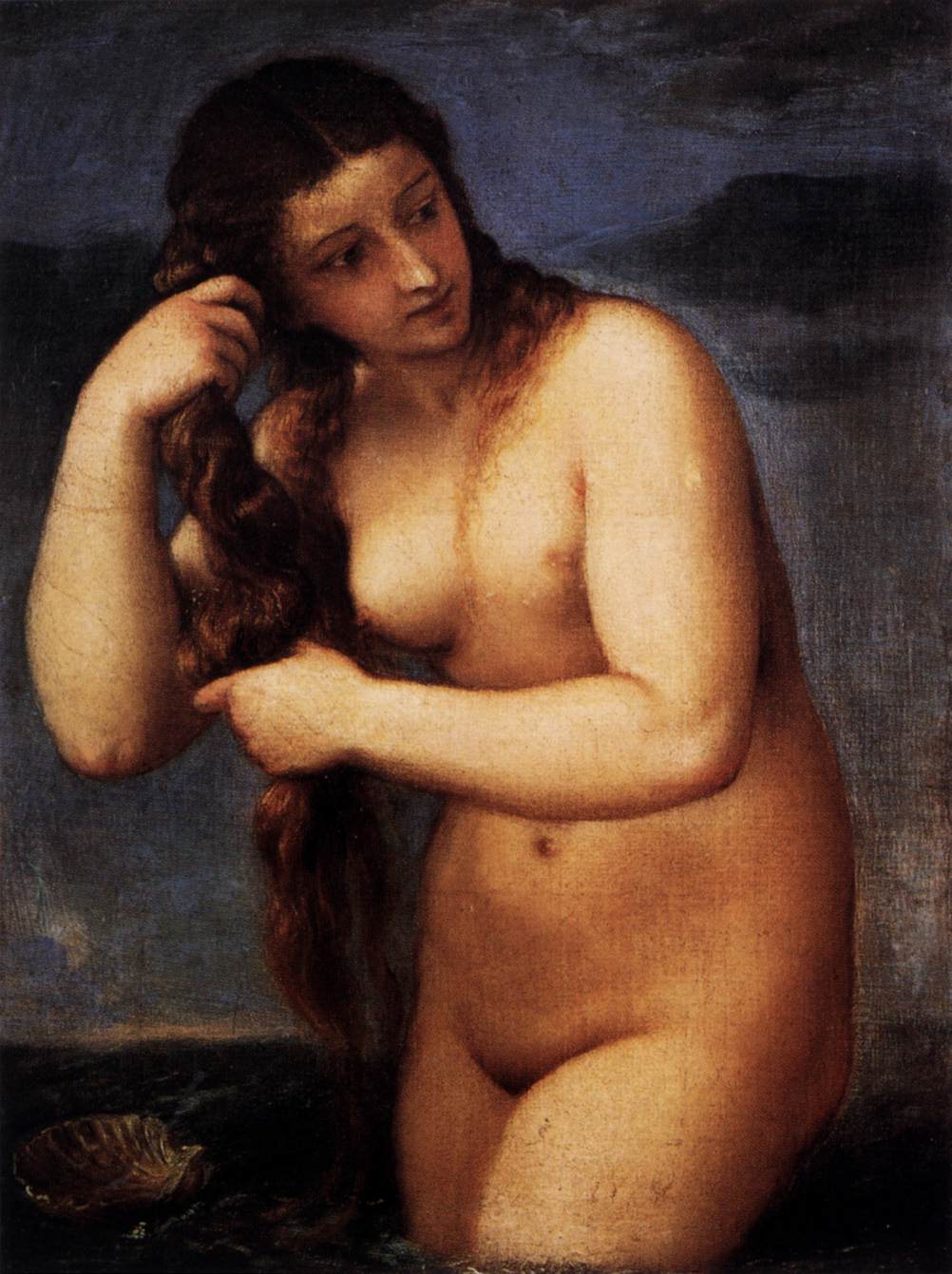The artwork titled “Venus Anadyomene (Venus Emerging from the Sea)” is a creation by the distinguished artist Titian, dating back to circa 1520. This mythological painting is rendered in oil on canvas, exemplifying the aesthetic sensibilities of the High Renaissance. It possesses modest dimensions of 76 by 57 centimeters. Aptly housed, this masterpiece graces the Scottish National Gallery of Modern Art, as well as the Scottish National Gallery in Edinburgh, UK, where it can be appreciated by connoisseurs and the public alike.
The artwork depicts the goddess Venus at the moment she rises from the sea, an origin myth rooted in classical antiquity and a subject that has captivated artists for centuries. The representation of Venus is imbued with an idealized, sensuous beauty that is characteristic of Renaissance interpretations of mythological figures. Venus is shown with a gentle, contemplative expression, her gaze modestly diverted. Her left hand gracefully tends to her long, wavy tresses, emphasizing the femininity and delicacy of her form.
In the backdrop, the sea, from whence she emerges, is presented with sublime simplicity, a swath of blue that suggests the expanse without detailed narrative elements. The palette is composed of soft, harmonious tones, contributing to the ethereal and timeless atmosphere. A single scallop shell, often associated with Venus and a symbol of her birth, is visible near the lower frame, anchoring the deity’s connection with the oceanic realm. The artwork elegantly encapsulates the mythology, grace, and humanism that are so intrinsic to the High Renaissance period.























